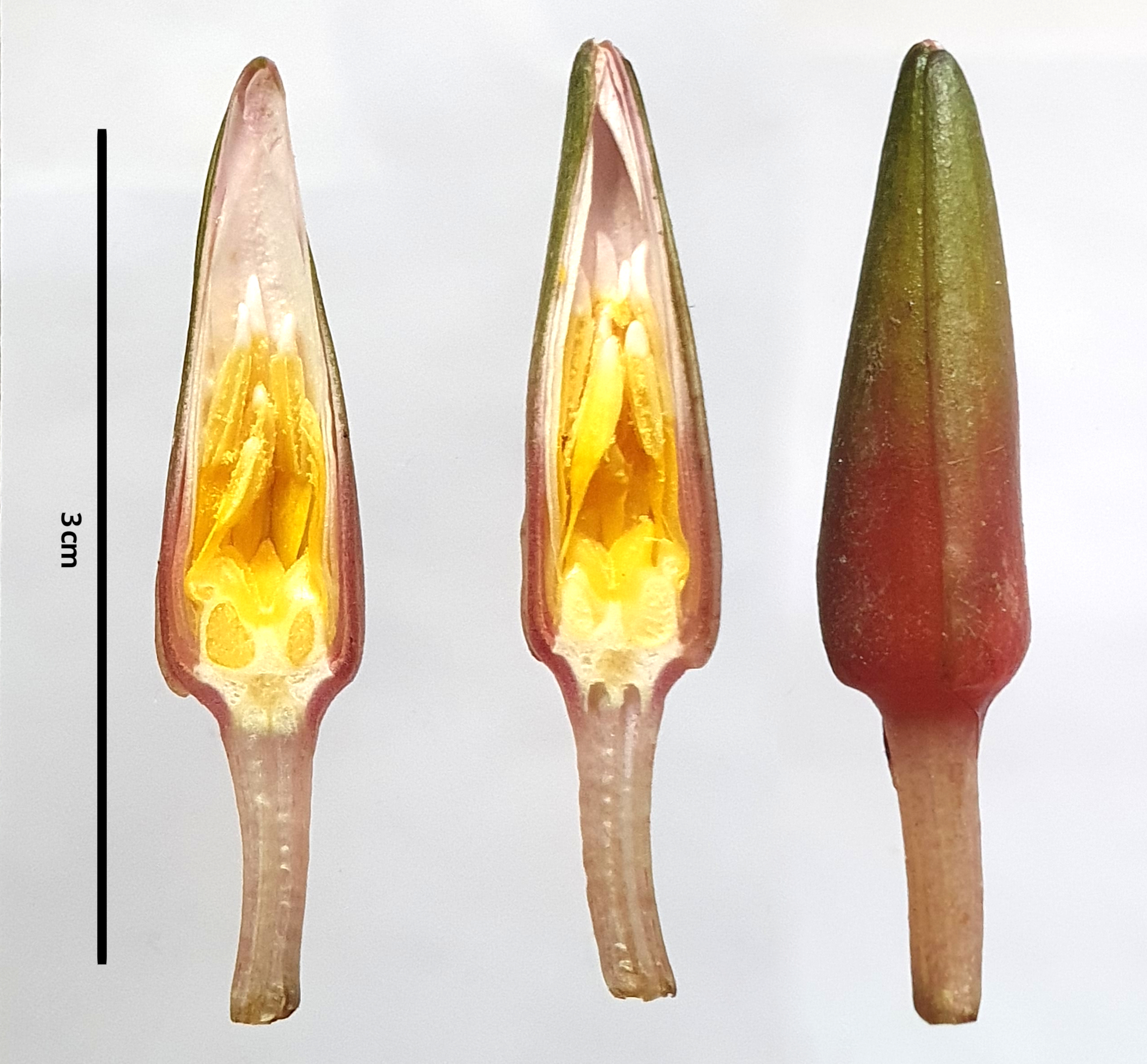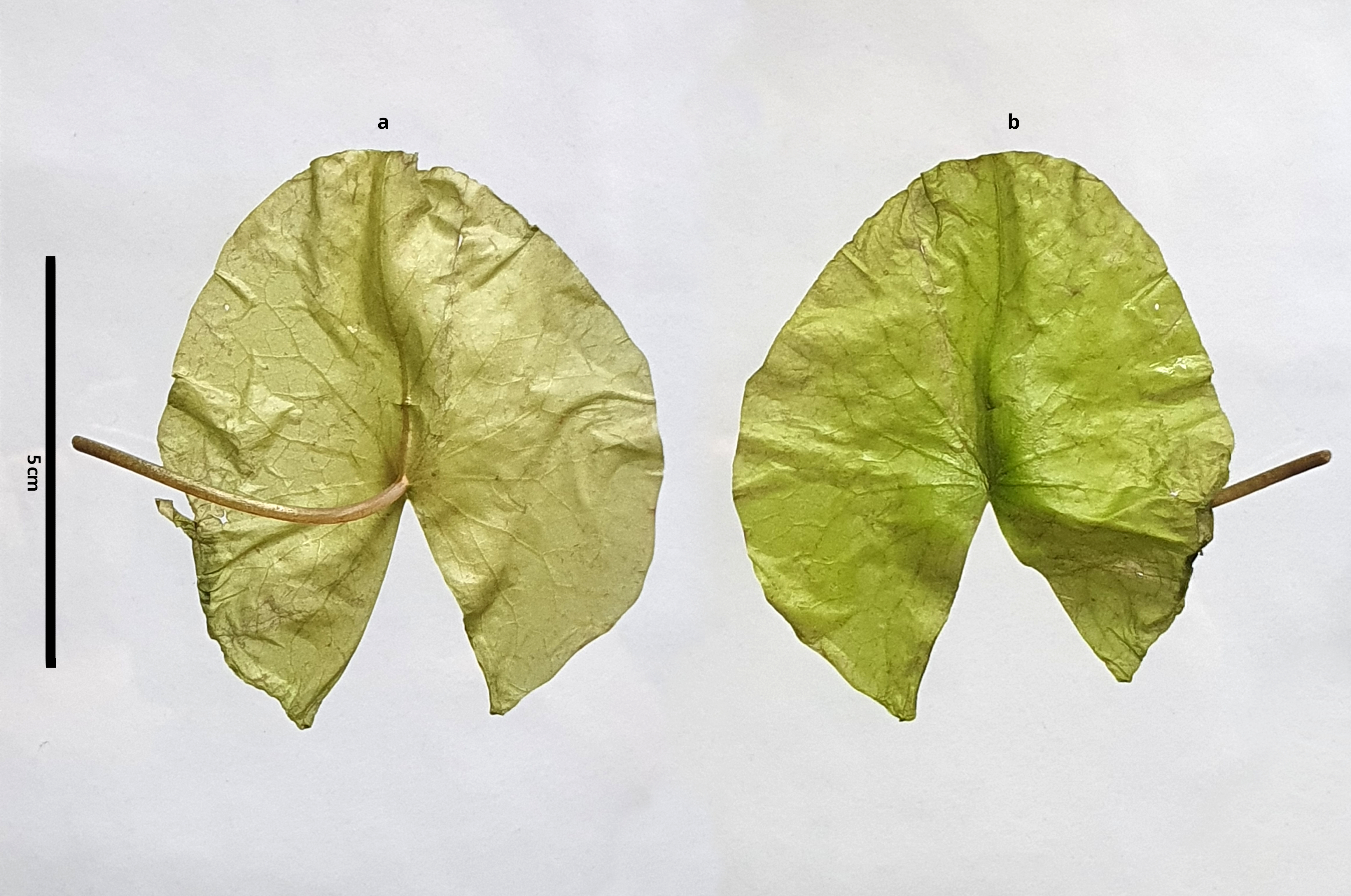Nymphaea Dimorpha on:
[Wikipedia]
[Google]
[Amazon]
''Nymphaea dimorpha'' is a species of waterlily endemic to Madagascar.


 This species exhibits two distinctive growth forms. The submerged growth form has very thin foliage with short petioles. The emergent form has floating leaves with longer petioles.
This species exhibits two distinctive growth forms. The submerged growth form has very thin foliage with short petioles. The emergent form has floating leaves with longer petioles.
"Water lilies as emerging models for Darwin’s abominable mystery."
Horticulture research, 4.
"Names of extant angiosperm species that are illegitimate homonyms of fossils."
In Annales Botanici Fennici (Vol. 51, No. 5, pp. 305–317). Finnish Zoological and Botanical Publishing Board. The prefix ''di-'' means "two", and ''-morph'' means shape.Morph definition and meaning , Collins English Dictionary. (2023). Retrieved July 13, 2023, from https://www.collinsdictionary.com/dictionary/english/morph
"Leaf Anatomic Structure and Cold Tolerance Evaluation of 6 ''Nymphaea'' Species."
Plant Gene and Trait, 13. It is used in hybridisation to create new smaller waterlily cultivars.Sacher, R. (2008, February). - Lusty Li’l ''Nymphaea minuta''. Water Gardeners International. Retrieved July 12, 2023
Description


 This species exhibits two distinctive growth forms. The submerged growth form has very thin foliage with short petioles. The emergent form has floating leaves with longer petioles.
This species exhibits two distinctive growth forms. The submerged growth form has very thin foliage with short petioles. The emergent form has floating leaves with longer petioles.
Cytology
The chromosome count is n = 14. The genome size is 449.88 Mb.Chen, F., Liu, X., Yu, C., Chen, Y., Tang, H., & Zhang, L. (2017)"Water lilies as emerging models for Darwin’s abominable mystery."
Horticulture research, 4.
Reproduction
Generative reproduction
Cleistogamy
Cleistogamy is a type of automatic self-pollination of certain plants that can propagate by using non-opening, self-pollinating flowers. Especially well known in peanuts, peas, and pansies, this behavior is most widespread in the grass family. ...
occurs in this species. It can produce flowers, which never open, but self-fertilise and never reach the water surface.
Habitat
It grows in pools of water among slowly flowing streams. The pools, which are darkened with organic material, are shaded by the canopy of tropical forest.Landon, K. C., Edwards, R. A., & Nozaic, I. P. (2005). A New Species of Waterlily, ''Nymphaea'' sp., from Madagascar. Water Garden Journal, 20(4).Taxonomy
Taxonomic history
This species was first described as ''Nymphaea minuta'' K.C.Landon, R.A.Edwards & Nozaic in 2006. Later, it was discovered that this was aNomen illegitimum
''Nomen illegitimum'' (Latin for illegitimate name) is a technical term used mainly in botany. It is usually abbreviated as ''nom. illeg.'' Although the International Code of Nomenclature for algae, fungi, and plants uses Latin terms as qualif ...
, as the name was preoccupied by the French fossil waterlily ''Nymphaea minuta
''Nymphaea minuta'' is a fossil species in the family Nymphaeaceae from the Aquitanian of Manosque, Alpes-de-Haute-Provence, France.''Nymphaea minuta'' Saporta (n.d.). The International Fossil Plant Names Index (IFPNI). Retrieved March 3, 2025, ...
'' Saporta described in 1891. Therefore, the new name ''Nymphaea dimorpha'' I.M.Turner was chosen in 2014.
Type specimen
The type specimen was collected in shaded rain pools beneath coastal forest near Tampolo, Madagascar in 1999.''Nymphaea minuta'' , International Plant Names Index. (n.d.). Retrieved July 12, 2023, from https://www.ipni.org/n/60445240-2Placement within ''Nymphaea''
It is a member of ''Nymphaea'' subgen. ''Brachyceras''.Etymology
The specific epithet ''dimorpha'' references the two distinctive growth forms of this species.Turner, I. M. (2014, October)"Names of extant angiosperm species that are illegitimate homonyms of fossils."
In Annales Botanici Fennici (Vol. 51, No. 5, pp. 305–317). Finnish Zoological and Botanical Publishing Board. The prefix ''di-'' means "two", and ''-morph'' means shape.Morph definition and meaning , Collins English Dictionary. (2023). Retrieved July 13, 2023, from https://www.collinsdictionary.com/dictionary/english/morph
Cultivation
It is easily cultivated and suitable for low-light conditions. In cultivation it may grow four times larger than plants observed in their natural habitat. This is due to better fertilisation. It is very sensitive to cold temperatures.Yang, K. (2022)"Leaf Anatomic Structure and Cold Tolerance Evaluation of 6 ''Nymphaea'' Species."
Plant Gene and Trait, 13. It is used in hybridisation to create new smaller waterlily cultivars.Sacher, R. (2008, February). - Lusty Li’l ''Nymphaea minuta''. Water Gardeners International. Retrieved July 12, 2023
References
{{Taxonbar, from=Q42890652, from2=Q17253175 dimorpha Flora of Madagascar Endemic flora of Madagascar Plants described in 2006